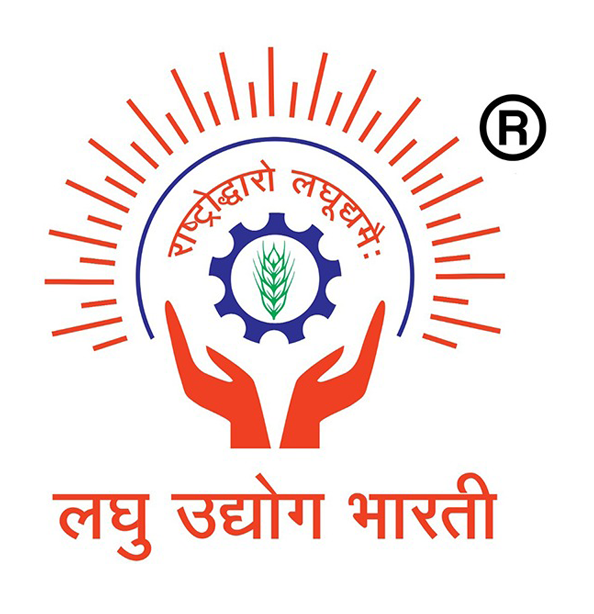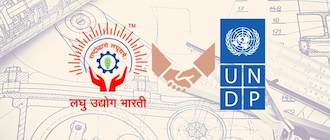Challenges of MSME
Following are some challenges of MSME:
Mentoring & Advocacy
Even today, most small business in India are set up by first generation entrepreneurs. They often have a product or service idea, some money, a zest to hard work but limited knowledge about markets, Government or bank procedures, cash flows or how to manage labour. This is where mentoring a hand holding support becomes crucial. At times, this comes from an individual such as friend, relative, an NGO or a parent unit. This is episodic and unable to meet the vast requirement which the country has. This is sought to be institutionalized through extension/outreach efforts of central and state Governments. Trained manpower is made available for this task, right down the district levels, to act as the friend, philosopher and guide. These resource persons guide in setting up a evit, making it commercially viable, interacting with financial institutions and understanding markets, as well as the impact of globalisation with advancements in it. There is a strong more towards linking SMEs with bigger commodity or supply chain and providing acceptable quality and delivery schedules. The Central Government's agency for the task, the Small Industry Development Organisation, has accordingly moved away from its pre-reform regulatory to a direct promotional role of hand holding, advocacy and facilitation. This encompasses the legislative support put in place, fiscal incentives and protection from unequal competition.
Credit
Credit is the lifeline of business. Small businesses lack access to capital and money markets. Investors are unwilling to invest in proprietorships, partnerships or unlisted companies. As risk perception about small businesses is high. So is the cost of capital, institutional credit, when available, requires collateral which in turn makes the owner of the unit even more vulnerable to foreclosure. Credit guarantee funds which assist lending institution in advancing loans or mutual guarantee systems involving common guarantees from a group of people have not emerged in a significant manner. Unit finances comes under severe stress whenever an occasional event such as a large order, rejection of consignment, inordinate delay in payment occurs. The common stereotype about a banker lending an umbrella in sunshine and wanting it back as soon as it rains, gets reinforced in their dealing with small enterprises. It is, therefore, not surprising, that small enterprises prefer to first tap own resources or loans from friends and relatives and theres look for external finance.
In India, many of small manufacturing enterprises do not access bank finance and only about 16% of total bank credit finds its way to the sector. Despite being a priority sector for lending, small manufacturing enterprises get just about 8% of their annual turnover as working capital requirements, as against normative requirements of 20%. Even for this, cost of credit is high. The problem is recognized and is sought to be addressed through various ways:
- Establishment of ISO 9000 certified, specialized SSI bank branches in districts/clusters./li>
- Directive for working capital finance @ 20% of annual normative turnover.
- Waiver of collateral requirements upto Rs. 0.5 million.
- Setting up of a credit Guarantee Trust to cover loans upto Rs. 2.5 million.
- Composite loans from a single agency upto Rs. 2.5 million.
- A national equity fund for equity to SSI units at 5 percent service charge.
Technology
As mentioned earlier, small enterprises are often regarded for their labour intensity and the capability to work with local resources. In the part, this has often led to less emphasis on technology. Run of the mill technology coupled with functional packaging and inadequate finishing have at times led to small sector products being labeled as being of poor or substandard quality. This has a cascading impact on competitiveness. As small enterprises realize the need to link up with large ones, they are having a relook at technology options which would improve productivity, effectiveness and competitiveness. While sourcing technology, small business need to concentrate on the following essential issues:
- Information about Technology
For small units information about technology options is often through word of mouth or from a visit to an advanced unit. With the advent of internet, new vistas are opening up through electronic journey catalogue downloads and advanced search facilities. The technology bureau for small enterprise promoted with the assistance of the UN offers access to databases and information on technology. Technology intervention in clusters offers near by units an opportunity for a look and feel of advanced technology entrepreneurs are also assisted to participate in overseas trade fairs to update tem with latest worldwide. Tool rooms, testing centres, production-cum-process centres and workshops also assist in this task.
- Actual procurement of technology
Barriers to import technology, technology transfer issues, vendor capability, after sales support, import procedures impede procurement. In India, the Asia Pacific Centre to Transfer of Technology promotes match making between buyer and seller and facilities procurement through escort services. Encouragement to import of capital goods has also helped.
- Finance for Technology upgradation
Small enterprises look to external sources of funding for upgrading technology as withdrawing money from business entails its own costs. In India, a technology upgradation and modernization fund and a hire purchase scheme attempts to meet this requirement. These are however, funds at normal lending costs. A new scheme called the credit linked capital subsidy scheme, for reducing the cost of funds, has now been put into place.
Market Access
In today’s world, small enterprises can hardly match the adventising support or distribution reach of a large corporation. In India, small units sell best in limited or neighbourhood markets or when they are meeting a low volume specialized demand which no large player can effectively caterto. Increasingly, now the endeavour is to build the marketing activity of small units around their competitive advantage i.e., products which are labour intensive, items which cater to niche markets, low volume high margin products, sub assembly tasks, outsourcing jobs andancillarisation. Sub-contracting exchanges are being established through Government and Industry associations to promote such interface. After sales service for imported products, AMCs on electronic equipment, reverse engineering (to the extent that it is WTO compatible) are the other areas being encouraged, sophisticated marketing is a task best left to large players. Small enterprises in India are realizing that the term “marketing” perhaps implies different things to different people for new SME businesses, head on competition with established giants makes little sense.
Infrastructure
Small units have traditionally operated from homes or a neighbourhood work shed. Slowly, they began moving out and clustering together wherever electricity, water, raw materials, markets or labour were easier to access. Policy makers in India had anticipated the need for suitable infrastructure five decades ago and began a programme for setting up industrial estates. Non-assessment of economic viability, tardy implementation and poor maintenance due to drying up of funds affected these adversely. Later in the post reform period, the problem was sought to be addressed by setting up of such estates exclusively for small business. Almost 50 such estates have been set up. Because of their better infrastructure such as roads, telecommunication, power, effluent treatment plants, power, banks, watch & ward, and reasonable cost, they have proved to be popular with small manufacturing for factory accommodation, allotment of sheds on hire purchase as well as outright sale etc. A concerted move has also now been initiated for upgrading existing estates.
Globalisation
The globalisation of trade & commerce has been given a push by agreements in the WTO and changed the business environment. It has therefore become necessary to sensitise SMEs about these changes and prepare them for the future. In India, a number of steps have been taken in this regard. Apart from setting up a WTO cell in the nodal ministry, 28 sensitisation workshops were conducted across the country. Workshops have also been held on intellectual property rights and bar coding. Monitoring of imports in specific sectors where SMEs hae a significant presence and initiation of anti-dumping action where dumping was noticed, are the other steps taken in this respect.
Procedures
Government and bank procedures coupled with inspections remain a major hurdle in growth of small units. There are over 60 central, state and local laws which regulate small businesses in the areas of labour, factory maintenance environment, municipal bye laws, taxation, power etc. These require the maintenance of as many as 116 registers and forms. To enforce these, there is an army of inspector who visit units leading to harassment, delay, obstruction and increase in cost of production. Many small units are one man shows and cannot satisfy the letter of the law. The streamlining of such rules and regulations has become necessary if the creative genius of Indian entrepreneurs is to be fully unleashed. Some state governments have exhibited initiative in this regard. The Central Government has initiated a study to enact a single law for small businesses. This enactment should ease the situation considerably.
Exit Mechanism
Like products, Industries too have life cycles. There are industry segments which have seen their best days. Similarly, there are individual units where no amount of additional funds will help. Their bank loans have become bad and non performing. A sound exit policy which also safeguards labour interests has therefore, become necessary. It is anticipated that as of 1998, over Rs. 3.8 billion were locked in sick/weak units. An exit policy would help fresh circulation of a significant amount. The first steps in this regard have been taken recently by India’s central bank where by one time settlement of dues as on 31 March, 1997 was allowed. The results have been encouraging.
Strategy Interventions for Revitalisation and Growth
Significant charges in economic environment are being heralded in by the WTO. The removal of QRS has led to increased competition with imports. Many sectors of industry are facing competition from Chinese or Taiwanese imports within the country or from Bangladesh Srilanka or Nepal in export markets. It is the belief of the Indian Government that promotion and not protection is the answer to the issues of survival and growth. Thus, while reservation of items for exclusive production continues, the focus must now be on strengthening capabilities. This implies a holistic look at the concerns of industry. As part of this, the following strategic interventions have been initiated:
- Easing access to general credit
- Introduction of options of limited partnership and factoring
- Subsiding cost of finance for upgrading technology
- Industry specific technology upgradation programmes
- Fund for developing and accessing overseas markets for export
- Expanding reach of infrastructure programmes
- Ushering in a regime of self certification in lien of inspections for various regulations
Interventions in the future require that hurdles to growth are removed. They must encourage a seamless movement from small to medium to large. The Indian Government, therefore, is working on a new vision for the SSI sector through a flexible approach and a motivated team. The advocacy role of Government now involves new dimensions such as building up and arguing cases before the world trade body or dispute redressal for a, articulating needs of small enterprises before decision makers and other agencies. Credit is increasingly being made available at international rates. Technology upgrades at both the cluster and the individual level are being assisted. Cluster level technologies will be at Government cost with only user charges recovered credit guarantee scheme has been put in place if our market has opened up to due to WTO, we need to enable our small units established foot holds in new markets opened up for then by globalisation. Thus, along with improving quality, they are being given the opportunity of over seas travel, conducting market surveys, test marketing etc. The existing industrial centres are being revamped by involving industry associations with some government assistance and finally a migration from sunset industries to sunrise industries is being encouraged through a comprehensive and graceful exit policy, which balances interest of labour with those of the owners.
Conclusion
The singular contribution of SMEs is on account of their unique characteristics. Their role in economic activity is manifest in both tangible and intangible ways. If this contribution is to be sustained, then their uniqueness needs to be nurtured in an overt and explicit manner. The Indian experience has shown that it is possible to design targeted interventions be they area specific like clusters or be they sector / sub-sector or product-specific. Other countries, be they Asian or OECD, also have policies which aim at similar support. The need of the hour is for us to learn from each other, drawing upon experiences and identity" "best practice policies". These in turn have to meet local conditions and circumstances. A "one size fits all" approach will not work. Nevertheless, there can be no two opinions about the priority that SME policies deserve for achieving the socio-economic goal of employment growth and social justice, along with the individual "aspirations".





